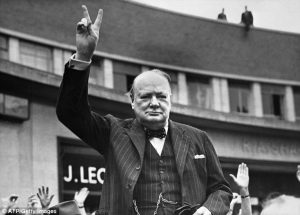The Start of the Decolonisation Process of the British Empire: The Dominions, and the Commonwealth.
The flow from Britain was light in the l 890’s, however it picked up thereafter particularly from 1907 onwards. The majority now were Scotsmen and English but not very many Irish. After the 1914-18 war migration became more organised and involved more state assistance. In this case immigration could be interpreted as a two-fold policy. One helping British development by sending out surplus unemployed and one of helping the empire by supplying vitally needed labour for development.
Thus joint sponsoring schemes were organised. Australia provided land for migrants while both the British and Australian governments helped with passage money and better transport organisation. Such schemes nonetheless met with only minimal success. Mainly because the interest of the British in the colonies was waning. 1920 was the best year for migration and this was before the state schemes were operating, when 135,000 went out, but this in no way approached pre-war figures. All together, the empire settlement scheme was a failure, because most migrants preferred to finance their own passage.
Life in the four main Dominions (Australia, Canada, New Zealand and South Africa) of the white settlement was progressing rapidly to British levels and in some cases ahead of them. The ready availability of food and space and the openness of opportunity helped to produce a healthy, proud community. Advances in health treatment did not take long to reach the colonies. As for the education, the emphasis upon equality of opportunity meant that many colonial children had better prospects for a good life than their British counterparts. In Australia primary education became the prerequisite of all children and after the tum of the century increasing emphasis was put upon the furtherance of training at a secondary school level. Yet feelings of insecurity in culture of the colonies still continued and the ultimate in excellence was still conceived of in British terms. So while colonial universities expanded and new ones opened, Oxford, Cambridge and the Inns of Court were seen as the hallmarks of success.
The undervaluing of the spirit of initiative in the colonies was because the colonial was not yet prepared to assert a cultural independence. Already there were cases of political ideas which arose first in the colonies and were later adopted in Britain. “Secret ballot, the payment of members of parliament, votes to women and manhood suffrage were put into operation first in outposts of the empire. Britain was not the sole originator of the ideas of liberalism and democracy; the transference of ideas and institutions was not a one-way movement from the metropolitan power to the colonies.”3
Life in the Dominions was helped by the progress made in world communication. The railway revolution which had begun to open them up in the mid-nineteenth century persisted in later decades so that both coasts of Canada and of Australia were linked while numerous lines zigzagged across the countryside. In Southern Africa the rail-line pushed further north in the quest of building a Cape to Cairo backbone. Whereas in 1850 only 8,500 miles of rail had been laid, by 1895; 50,000 miles covered India and the colonies. With the twentieth century motor car transportation became even more widespread. Furthermore the inter-war period saw the commercial development of aircraft. Imperial Airways carried its first mail and intrepid passengers to Cape Town via Cairo.



